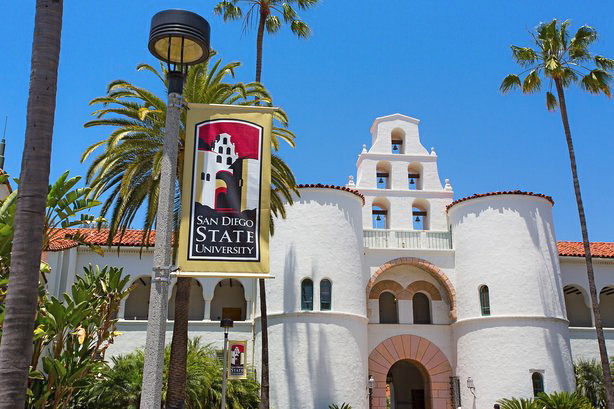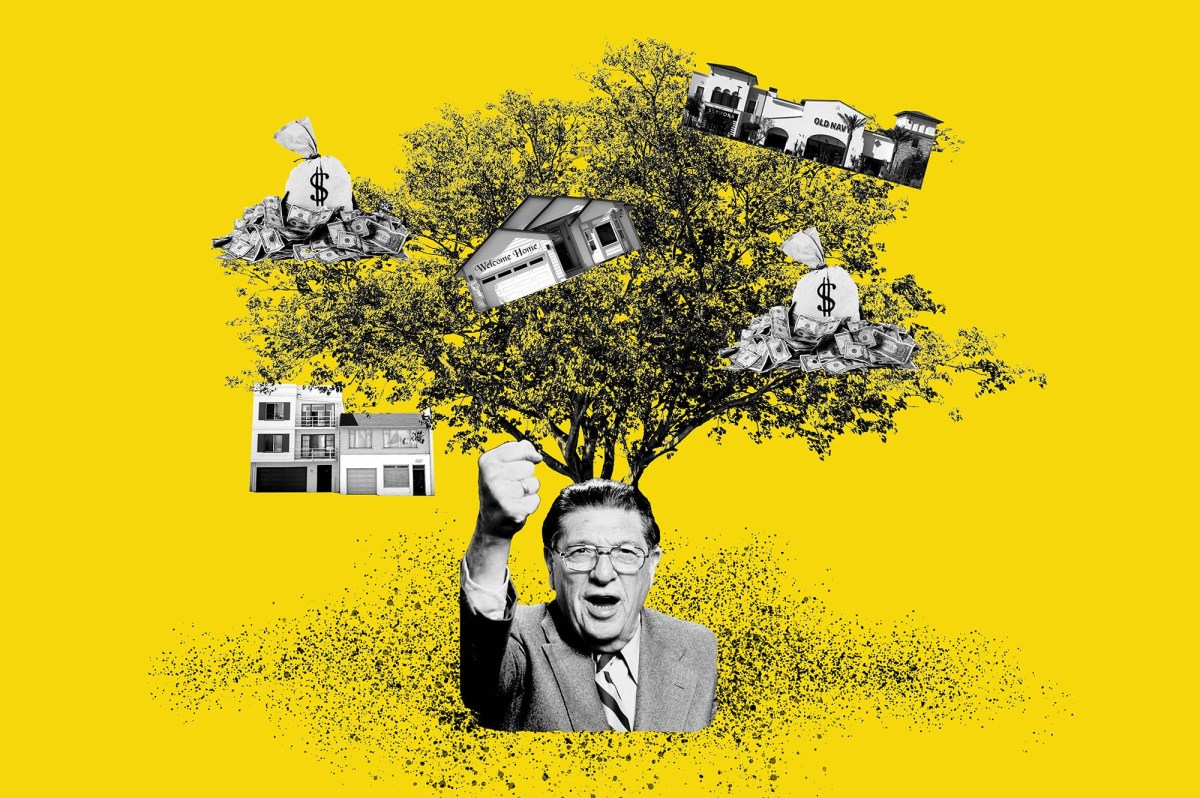Daily Business Report-Aug. 4, 2015
San Diego State University
California Supreme Court Rules
SDSU Must Pay for Street Projects
The California Supreme Court on Monday ruled that the California State University Board of Trustees violated state environmental laws by expanding the campus of San Diego State University without including funds for infrastructure improvements that are needed to prevent congestion on San Diego streets.
City Attorney Jan Goldsmith declared the decision an important victory for San Diego taxpayers, who were on the hook for several millions in street improvements that the project’s environmental impact report said were necessary to mitigate project impacts. The city had previously won this case before an appellate court, but the CSU board appealed. Deputy City Attorney Christine M. Leone argued the case before the Supreme Court in May.
The case was closely watched throughout the state, and especially by other college cities — including Bakersfield, Fresno, Long Beach, Monterey Bay and San Francisco — where the CSU system was similarly trying to stick cities with the bill for street projects identified as necessary mitigation in the projects’ environmental impact reports, according to Goldsmith.
The EIR for the SDSU expansion included a 348-unit housing complex for faculty and staff, a 612,000-square-foot classroom complex with an adjoining parking garage, a 120-room hotel, conference center, five student housing structures for 3,400 residents, and the recently renovated Aztec Student Union.
The EIR identified 15 intersections, eight street segments, four freeway segments and one freeway ramp meter that would be significantly impacted by the project. It calculated the project’s “fair-share contribution” of the needed improvements at $15 million, but took no responsibility for those costs, effectively leaving them with the city and Caltrans.
The CSU board contended it did not have to pay for the mitigation projects because the Legislature had not allocated funds specifically for that purpose. San Diego argued that the California Environmental Quality Act includes no such exemption, and noted that numerous potential funding sources already exist and are identified in the project’s budget.
“This is an important decision which treats the CSU system like any other developer. It must come to the table and negotiate its fair share in a way that protects the environment and protects the city’s taxpayers,” Goldsmith said.
Leading Economic Indicators Up in June
The USD Burnham-Moores Center for Real Estate’s Index of Leading Economic Indicators for San Diego County rose 0.4 percent in June.
The upward move was led by strong gains in building permits and the outlook for the national economy, while local stock prices were up moderately. These outweighed small declines in initial claims for unemployment insurance, consumer confidence, and help wanted advertising to push the USD Index to its thirteenth consecutive monthly increase.
While still positive, June’s increase was the smallest since August of last year. June also saw the number of declining components match the number of advancing ones for the first time since July of last year.
But the drops in the declining components were small and could easily turn upward in the months ahead. The outlook for the local economy remains strong for the rest of the year and likely through at least the first half of 2016.
The local job market has been strong through the first half of this year, with year-over-year wage and salary employment up 38,500. The growth was broadly distributed over most sectors of the economy, with the leading sectors being professional, scientific, and technical services (+7,800 jobs year-over-year), health care (+6,900), leisure and hospitality (+5,200), wholesale and retail trade (+4,800), construction (+3,600), government (+3,200), and manufacturing (+2,700).

County May Support Penalties
When Drones Interfere at Wildfires
City News Service
The San Diego County Board of Supervisors today will consider whether to support state and federal legislation that would establish penalties for people whose unmanned aircraft interfere with firefighting efforts.
The proposal by Supervisor Bill Horn would have the county lobby for passage of two bills in particular. House Resolution 3025, by Rep. Paul Cook (R-Apple Valley) would make an interfering drone operator subject to a fine and up to five years in federal prison. California Senate Bill 167, by Sen. Ted Gaines, R-El Dorado, and Assemblyman Mike Gatto, D-Glendale, would also set up fines and jail sentences.
The proposed punishment would range from fines of $200 to $2,000, or for intentional and reckless acts, up to six months in jail and/or a fine of $5,000.
The proposed punishment would range from fines of $200 to $2,000, or for intentional and reckless acts, up to six months in jail and/or a fine of $5,000.
Horn’s proposal does not specify support for a companion state legislative proposal that would give firefighters authority to disable drones operating in fire areas.
In a memo to board colleagues, he said a drone prevented aerial drops of fire retardant in the early stages of a June wildfire that burned more than 31,000 acres and several structures in the San Bernardino Mountains.
Fire officials said a drone also got in the way of efforts to battle a brush fire last month in the Cajon Pass in San Bernardino County. The blaze eventually torched numerous vehicles on Interstate 15.
Horn said the issue was especially critical in San Diego County, which is prone to major wildfires.
Council Directs New Funding for
Park Boulevard, Harbor Drive Project
City News Service
A long-awaited plan to connect Park Boulevard with Harbor Drive got a boost Monday afternoon when the San Diego City Council unanimously directed new funding toward the project.
The thoroughfare stops next to Petco Park, where it intersects with Tony Gwynn Drive. A half-dozen railroad and trolley tracks currently sit between the road’s terminus and Harbor Drive.
The road extension was given its first go-ahead by city officials 14 years ago, when the Padres ballpark was being planned. The plan was to open up the last segment of Park Boulevard to make up for closing the nearby Eighth Avenue crossing.
Construction was delayed, however, by a legal challenge from the California Public Utilities Commission that took three years to resolve, a shift in city priorities to a pedestrian overcrossing that was built nearby, and the state’s abolishment of redevelopment, according to a report from Civic San Diego, which assists the city with certain development projects.
The Civic San Diego report said the nearly $14 million project, which will include pedestrian enhancements, will be largely covered by excess proceeds from leftover redevelopment bonds that recently became available.
While the state did away with the redevelopment process, projects in the pipeline were allowed to proceed, though many have been delayed.
The plan also calls for 100 feet of the Martin Luther King Jr. Promenade to be shifted to make way for a pedestrian crossing. Additional recognition of the civil rights leader would be installed as part of the project, Civic San Diego said.
Construction could start early next year and be finished by October 2018, according to the agency’s timeline.
Smart City Networks Awarded New $25 Million
Contract by San Diego Convention Center Corp.
The San Diego Convention Center Corp. has awarded a new 10-year contract to Smart City Networks to provide telecommunications an technology services for the convention center. The minimum estimated value of the contract is approximately $25 million, according to Jon Lynch, communications specialist with the Convention Center Corp.
The agreement, which went into effect July 1, includes a design established for 800 new Cisco 3702 access points — an upgrade that will allow for a greater number of guests and their wireless devices to access the Internet at ever-increasing speeds.
Other key features of the agreement include an upgrade to the building’s existing telephone switch, a digital signage system, and the installation of Neutral Host Distributed Antenna System (DAS). The DAS will accommodate the exponential increase in cellular network traffic that is seen during some of the building’s largest networking shows, such as ESRI User Conference and Comic-Con.
“Smart City has been a trusted partner of the San Diego Convention Center for the past fifteen years, and we are thrilled to extend our partnership into the next decade,” said Carol Wallace, president and CEO of the San Diego Convention Center Corporation. “These planned technology upgrades will ensure that San Diego is one of the premier meeting and convention destinations in the country.”

Sharp Rees-Stealy to Relocate to
Larger Facility in Rancho Bernardo
Sharp Rees-Stealy will relocate to a new location in Rancho Bernardo after construction is finished on a new three-story, 100,000-square-foot medical office building off of Interstate 15 at West Bernardo Drive. The facility will be completed in early 2017.
Lankford & Associates Inc. and HP Investors LLC broke ground on the project, which includes a 400-space, multi-level parking structure and 100 grade level parking spaces.
Sharp Rees-Stealy will relocate from its current Rancho Bernardo location at 16950 Via Tazon.
The San Diego office of Colliers International brokered Sharp Rees-Stealy’s 20-year lease and U.S. Bank provided a $31.7 million loan for construction of the office. Hensel Phelps Construction Co. will construct the core, shell, parking structure, and site improvements while McCarthy Builders will construct the tenant improvements. Davis Davis Architects is the core and shell architect and HKS/Cuningham have teamed up to design the interiors.
Old Copley YMCA to be Renovated
As a San Diego City Recreation Center
Times of San Diego
The vacant, 1950s-era Copley YMCA building in Mid-City will be turned into a community recreation center thanks to a $3.1 million state grant announced Monday.
The project was outlined by Mayor Kevin Faulconer, City Councilmember Marti Emerald and Park and Recreation Director Herman Parker at a press conference outside the old facility, which was vacated when the new Copley-Price YMCA opened in January. “The city now has the keys to the former Copley YMCA building,” Falconer said, and will use the grant to renovate it for residents of the Mid-City area.
There will be services for seniors, veterans and the disabled, and for youth upgraded basketball courts and a new skateboard park — financed by an earlier grant — on the 10.5 acre property.
“This is a project that should put a smile on everybody’s face,” said Emerald.
Emerald and Faulconer thanked the Mid-City Community Advocacy Network for its efforts on behalf of the project.
The facility will be renamed the Park De La Cruz Recreation Center when the renovation and skateboard park are complete in mid 2017. Parker noted that the gymnasium, which was added in the 1990s, could re-open as soon as October.
The grants for both the renovation and the skateboard park came from the California Department of Housing and Community Development.
San Diego Home Prices Rise
Times of San Diego
Home prices in June in the San Diego metropolitan area were up half a percent from May and 4.5 percent from a year ago, according to a new report from CoreLogic.
The Irvine-based business information provider said Tuesday the increase in San Diego compares with a rise nationally of 1.7 percent from May to June and 6.5 percent year-over-year.
“The current cycle of home price appreciation is closing in on its fourth year with no apparent end in sight,” said Anand Nallathambi, president and CEO of CoreLogic. “Pent-up buying demand and affordability, together with higher consumer confidence buoyed by a more robust labor market, are a potent mix fueling a 6.5 percent jump in home prices through June with more increases likely to come.”
CoreLogic said the five states with the highest year-over-year home price appreciation were Colorado at 9.8 percent, Washington at 8.9 percent, New York at 8.3 percent, and South Carolina and Nevada tied at 8 percent. California’s statewide increase was 6.3 percent.


